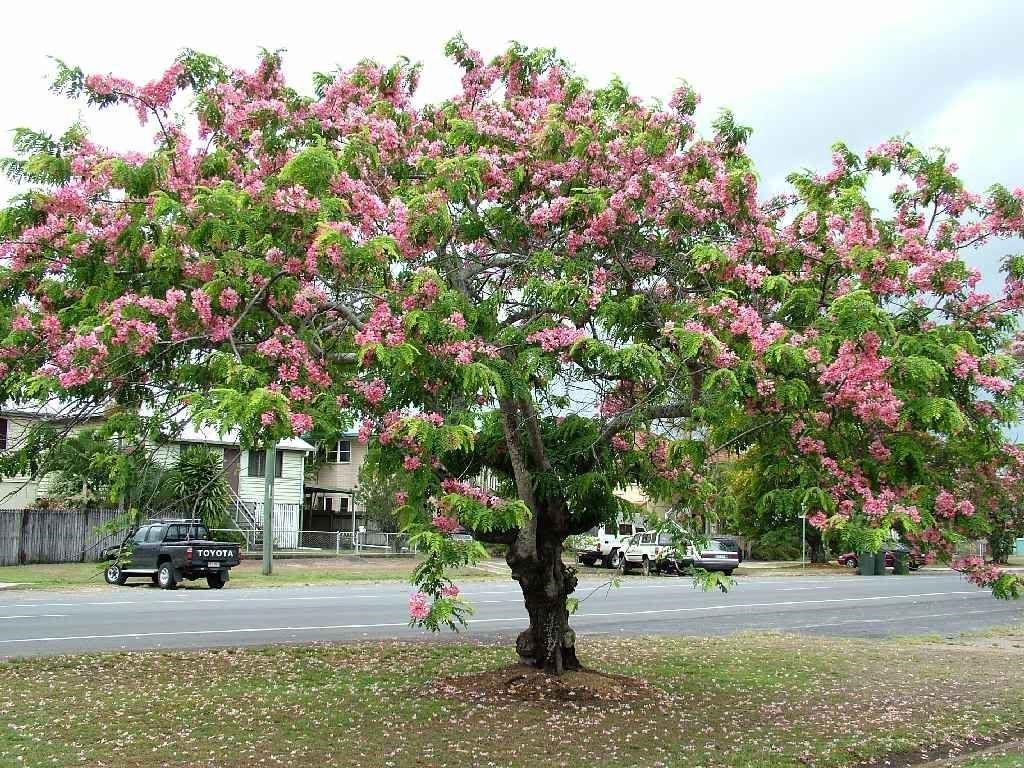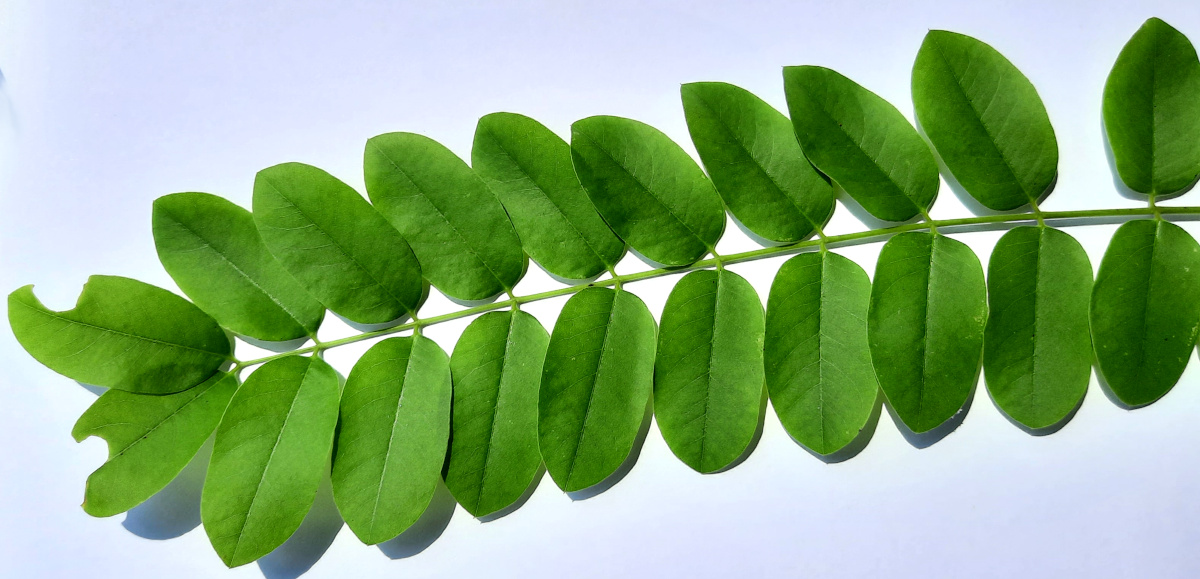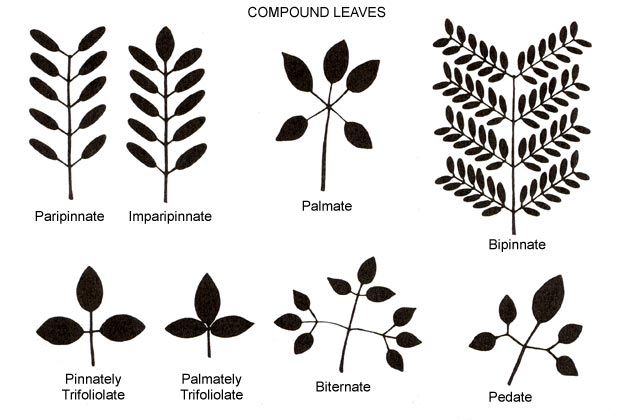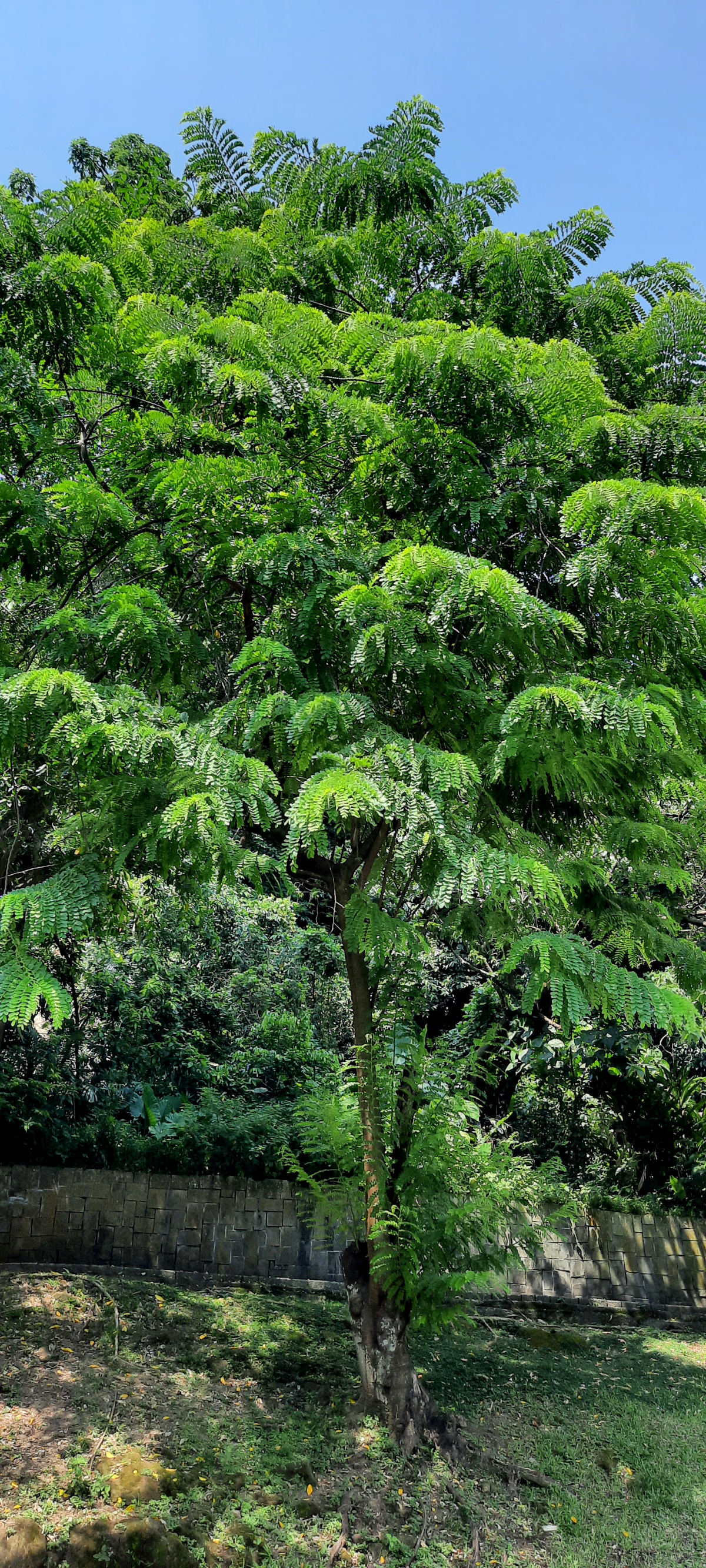I’ve come across this tree in a number of parks here in Taipei. The spring blossoms are exceptionally vivid and their remains blanket the ground with pinks, yellows and reds as summer nears.

The leaves are distinct, with twelve leaflets coming off a single stem, referred to as being pinnately compound. This notion of leaves in leaves is known as pinnation or pennation, such as in ferns and palms. The more common name for this is a compound leaf.

The word pinnate comes from the Latin pinna, meaning “feather, winged” source. Below is an image of some of the different types of pinnation that can occur.

In each of these the leaflets are attached to a main stem, or rachis, which is derived Latin and means spine ridge. The leaflets themselves are connected to a petiole. This was rather confusing for me when I started to research. What’s the difference between a stem and a petiole and a leaf vs. a leaflet?

The difference I found was that the petiole is attached to the stem at a point called a stipule, which is distinctive in the way it’s formed. If you pull off a leaf it’ll leave a scar there. You may notice if you remove leaves from some branches how they can sort of pop off, leaving a green space. This differs from breaking a stem off from a twig or a twig from a trunk. That part you’re popping is the stipule.
There doesn’t seem to be much consensus on why leaves are pinnate (compound) or not. It’s possible that there is some evolutionary advantage due to the amount of surface area that is exposed within different climates, either for photosynthesis or due to differences in rainfall. Here is one research paper that dives into the question with regard to one particular species. They looked primarily at how the environment shaped the leaves, focusing on rainfall in the areas these species grew.
Whatever the reason may be for the leaves of this tree being as they are, it does stand out amongst the trees at the park. The strips of well-ordered, smaller, bright green leaves move in a distinct manner under even a smaller breeze, and the individuals have a deeper shade of green on one side, causing a sort of flicker. Here is a full shot, from a distance (my apologies as it’s rather large, but I think it deserves the full shot).
